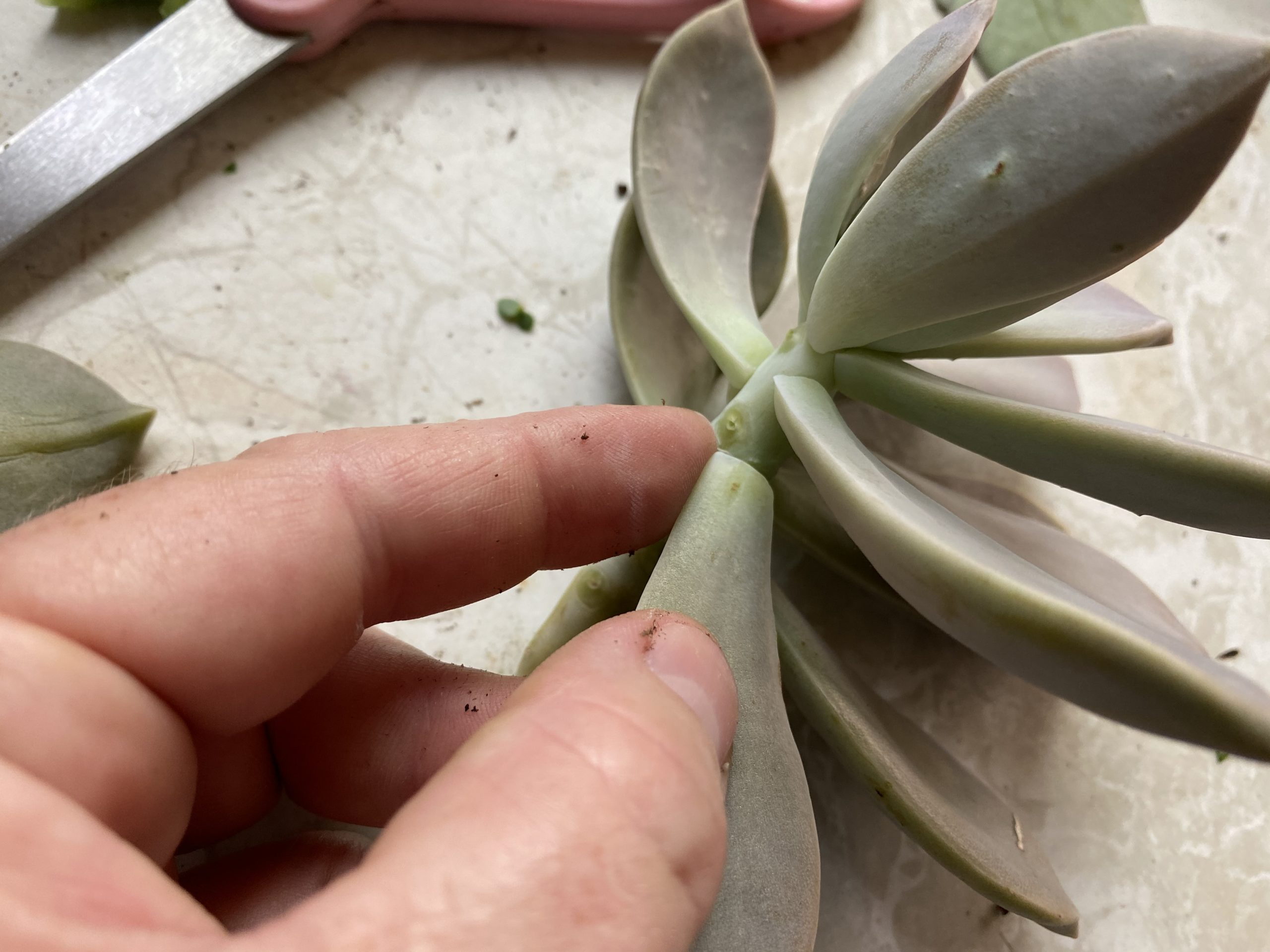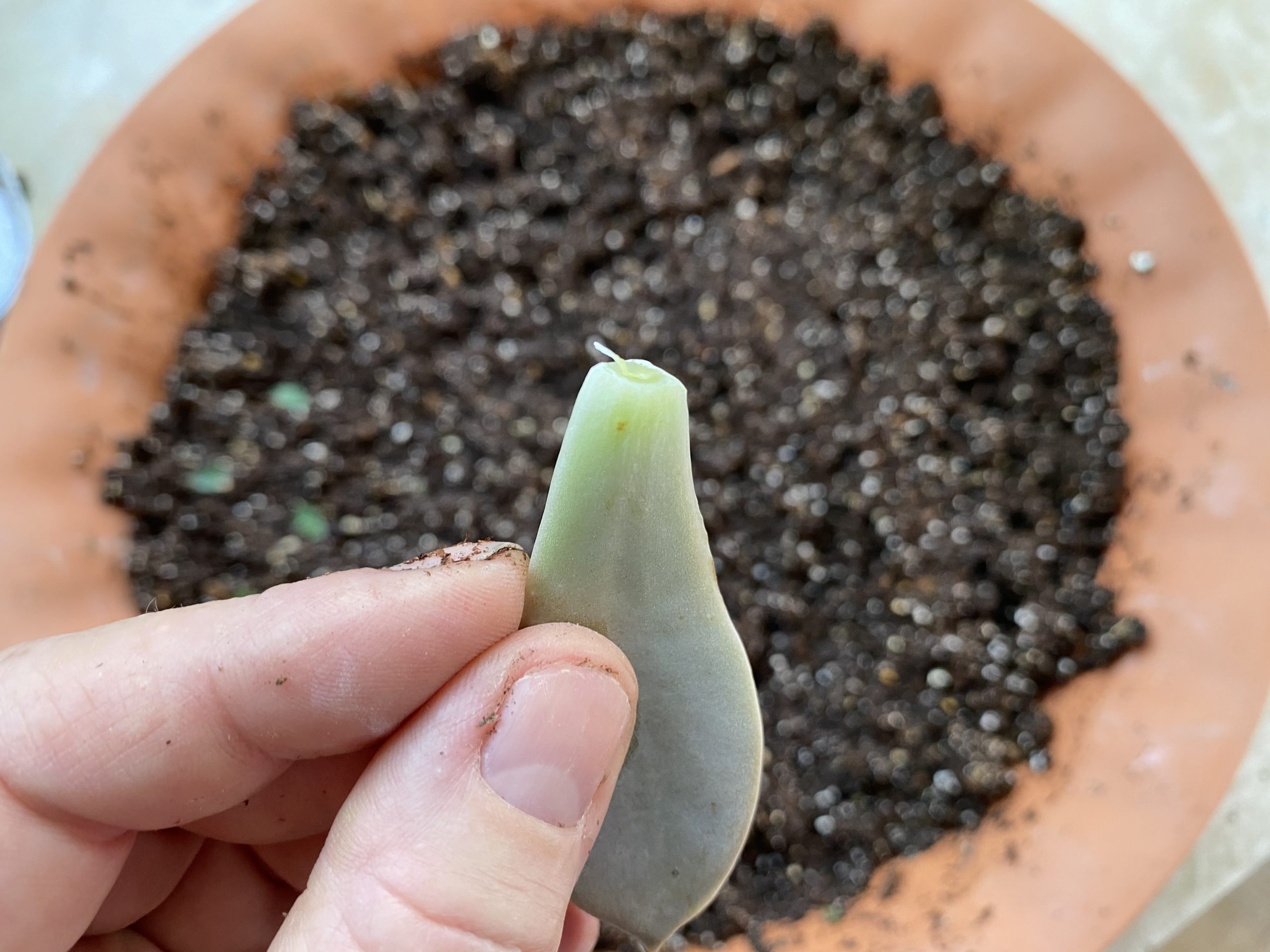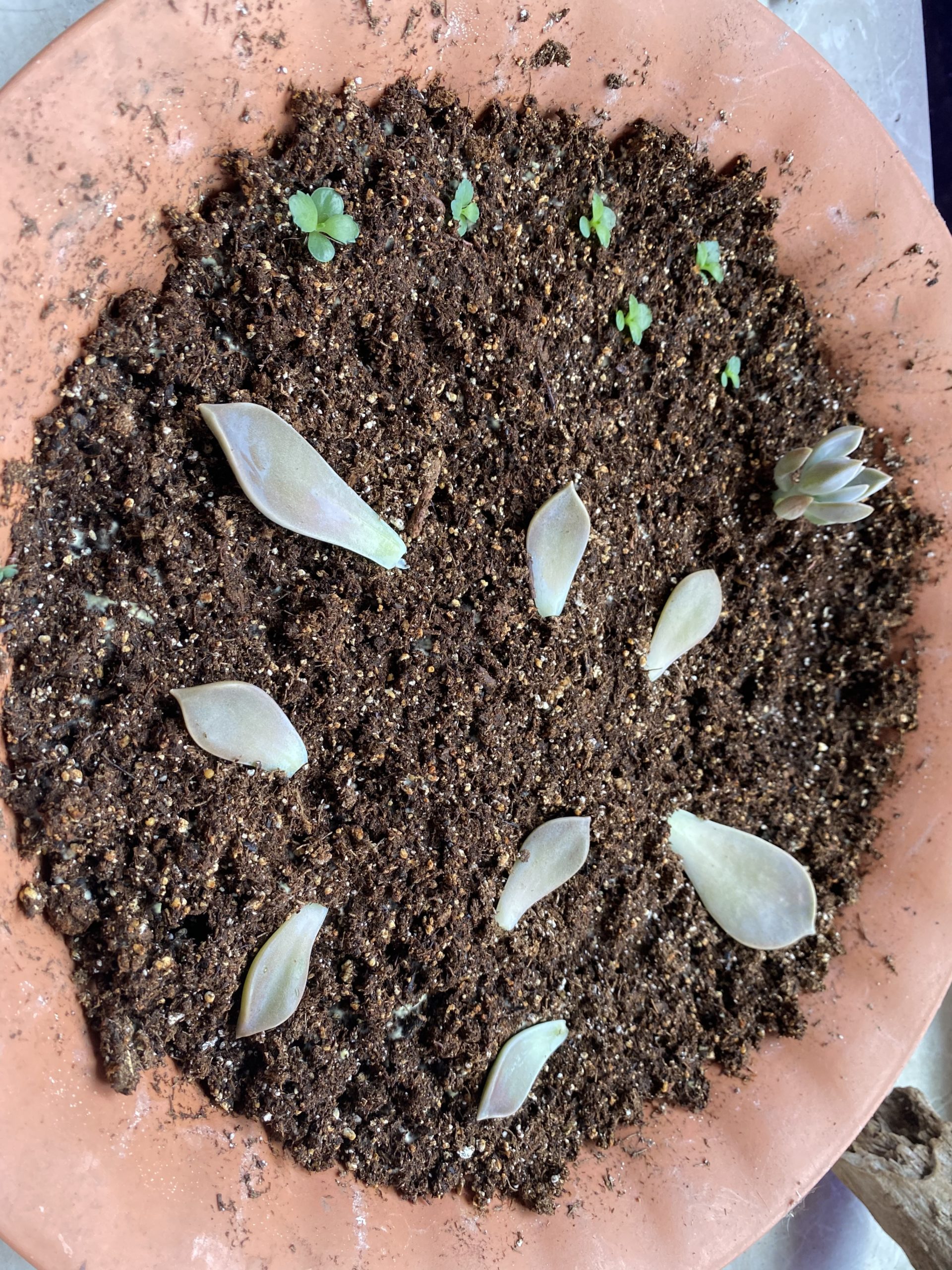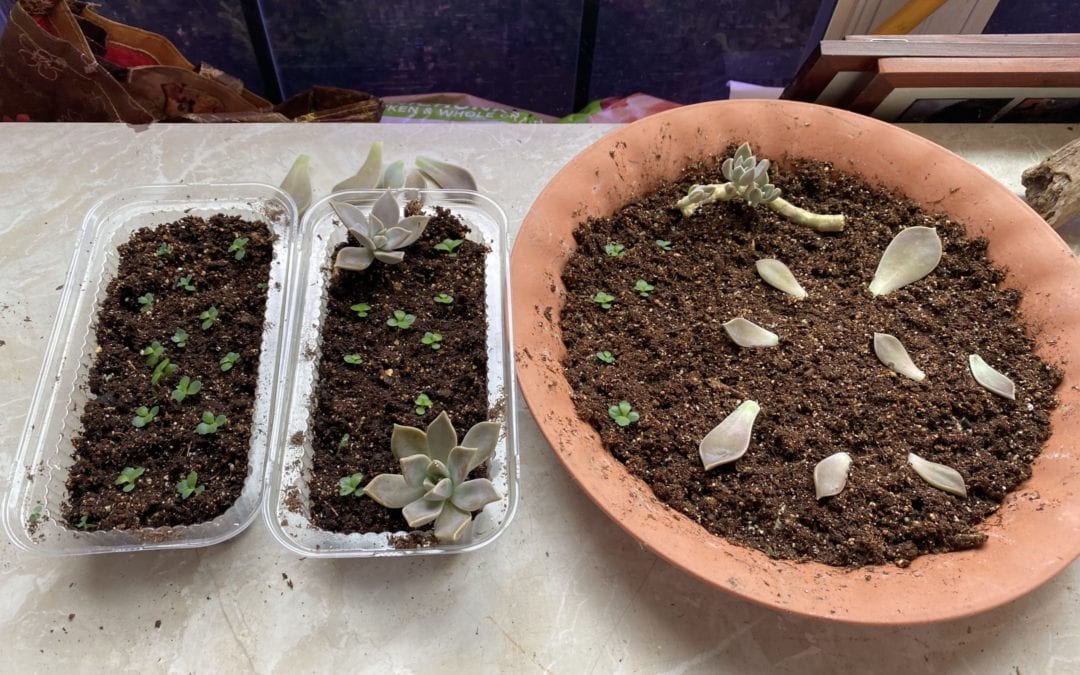Propagating succulents is a great way to have more of what you love. Maybe you need to propagate succulents because your plants have gotten leggy and somewhat unattractive; or maybe you are looking to share succulents with friends. Whatever your reasons, we’ve got a tried and true way for successful succulent propagation.
7 Easy Steps for Propagating a Succulent by Leaf Cutting
1. Remove desired amount of leaves from the stem of your succulent you wish to propagate.
- Make a clean snap where the leaf meets the succulent stem. This will help your propagation be faster and easier.
- Take multiple leaf cuttings for propagation (see #5).
2. Let the snapped off end of the succulent leaf heal/dry/callous over.
- A week is a great amount of time to wait for the leaves to heal, but you can get away with 2-3 days for small succulent leaves, and 4-5 days for larger succulent leaves.
- Place the succulent leaves you wish to propagate on a bright window sill to dry. The leaves get exposure to sunlight which also fortifies them with nutrients.
- LED grow lights are an option when natural sunlight is not.


3. Place succulent leaf on soil in a tray or directly on top of soil in a pot.
- The healed area of the leaf you are propagating should touch the soil, but not be buried down in the soil. The newly propagated succulent will grow from that area and needs light and breathing room to survive.
- You could leave the leaf to grow out of soil, but it will take much more time to propagate.
4. Offer your succulent leaf cuttings water and light for successful propagation.
- Water succulent leaf cuttings about 2-4 times per week, depending on temperature and humidity in your home. Don’t overwater though. Soil should be moist and prevented from drying out, but not so moist that there is any standing water.
- Bright, indirect light is best. Too much direct sun can scorch your leaf cuttings.
5. Propagate multiple leaves.
- When propagating succulents you most likely will have some casualties. By going through the steps of propagation with multiple leaf cuttings, you have a better chance at propagating succulents with success.
- Put a bunch of leaf cuttings on a tray or big pot full of lightweight potting soil. Here you can easily observe which leaf cuttings will start to grow roots and baby succulents and are suitable for propagating and which leaves start to shrivel and blacken, making them bad candidates for propagation.

6. Have patience and allow time for your leaf cuttings to propagate, develop roots, and create babies/pups.
- Special Note: If you notice leaf cuttings that grow babies but no roots, it’s ok, they are better than leaf cuttings that grow roots but no babies.
- When you see that baby succulents/pups are developing, you can breathe a sigh of relief. Once the babies/pups appear, you know they are capable of photosynthesis and creating their own food and leaf systems. A leaf cutting that just develops roots might never produce babies/pups or might take a really long time doing so.
- Once the babies/pups form, you can remove the mother plant leaf at any time by pinching or cutting it off.
7. Pot up your newly propagated succulents.
- Allow your babies/pups to become sturdily rooted enough to where you can repot them into whatever container you’d like. If you did the propagating process in your preferred pot, just let them keep on growing right there.
- Continue to offer propagated succulents indirect bright light while they are in adolescent stages. Direct sun will be too harsh.
- Water your new succulents by giving them a good soaking about once every two weeks. Again, don’t overwater. Just remember that succulents hold water in their leaves and stem and too much water around their roots will cause death by root rot, so don’t be heavy handed with your watering can.
- If you haven’t already, remove the leaf that was from the propagated mother plant which has most likely shriveled up by now. Cut it close to the new plant and the left over parts of the mother leaf will dry up and fall off eventually.
*Special note – some succulents cannot be propagated by leaf cuttings (hoya, kalanchoe) and can be propagated by other methods: stem cutting, etc.. We’ll address those later.
And that’s all she wrote, folks! Your propagated succulents should be well on their way to becoming mature plants. Good luck!
~The Happy Gardener, Lisa Mulroy


Did what you suggested and be damned if it didn’t work the first time.
Jade plants really want to survive if I can do it!
Ron,
That’s great to hear! Thanks for reading our tips and best of luck!
I have leaves that I’m propagating, all have roots and pups. The mother leaves have not shriveled up yet. It’s been a few months. Should I wait longer or remove the mothers?
Hi Amy,
If you have roots already, you are good to go. Congratulations on your pups! Go ahead and cut the mothers off. They should be fine especially since it’s been a few months.
Excellent article. Answered all my queries before I asked the questions. Thank you
Thank YOU for taking the time to read! Really appreciated.
I just propagated a bunch of succulent leaves for the first time I bought cactus and succulent soil. Let them kill us for several days then I put them on top of the soil. Do I water them at all or do I wait until they grow roots? My main question is, should I moist in the soil before putting the leaves in the pot?
Water succulent leaf cuttings about 2-4 times per week, depending on temperature and humidity in your home. Don’t overwater though. Soil should be moist and prevented from drying out, but not so moist that there is any standing water.
My kalanchoe all propagate easily
Terrific to hear!
Great clear instructions. Thanks. Can sempervivum leaves be propated?
We have found it much easier to propagate sempervivum by removing and transplanting the pups, or offsets, that grow from the mother plant.
My succulent leaves are so plump the calloused end doesn’t make contact with the soil they just lay on it. I can’t get the calloused end into the soil it keeps popping out. Is this okay? Will they root anyway?
Thanks
Hi Kathy,
I think you will start to see some “babies” developing out of the calloused end, if you give them a little more time. Your soil appears to be pretty saturated, so I would also not water anymore until those roots do start showing up, just to make sure the callouses are truly healed over. Moisture introduced to the cut ends will hinder the start of the propagation and could rot out the leaves before they get a chance to put out roots.